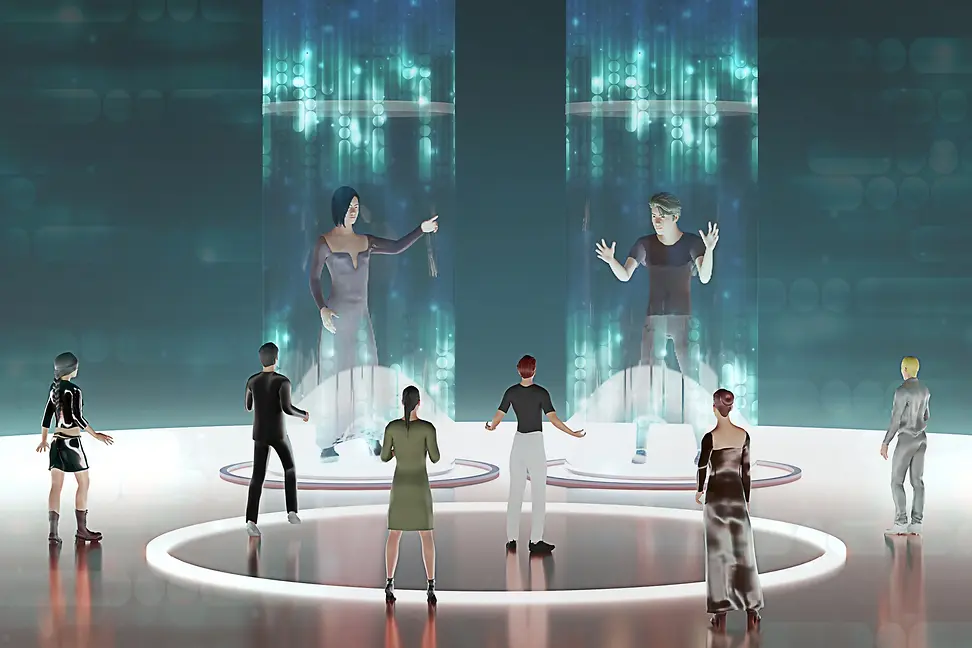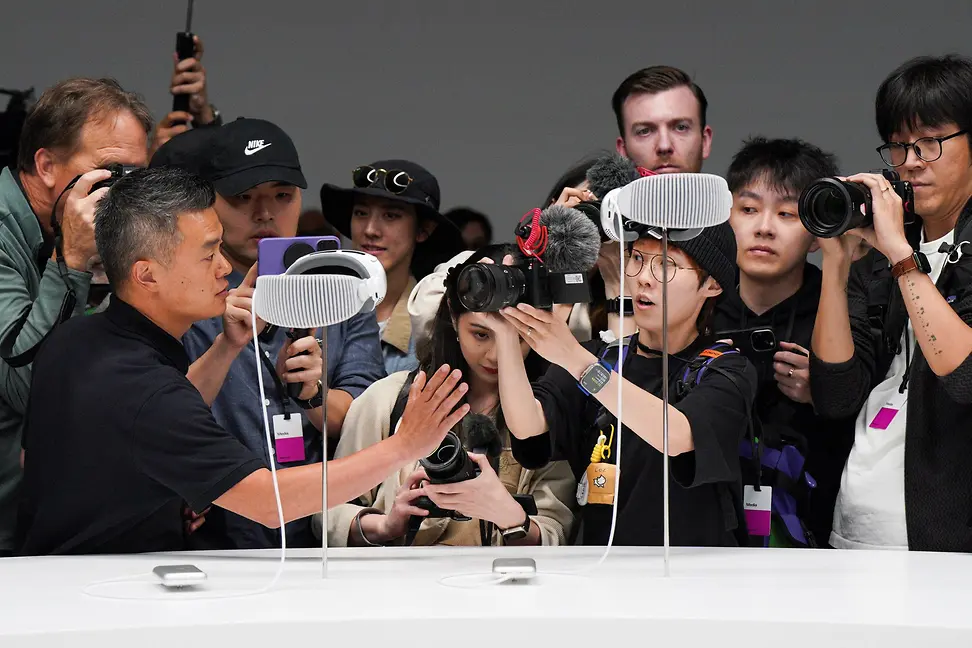- Home
-
Private banking
-
LGT career
Devices and apps that lure consumers and businesses into a new mixed or virtual reality are years away from gaining traction. But Apple has given the entire space a much-needed boost.

When Apple CEO Tim Cook unveiled the company's long-awaited Vision Pro headset, he used many different words to describe the "entirely new spatial-computing platform". What he didn't mention once though, was the metaverse or virtual reality (VR), which other companies, from Google and Sony to Meta, have sunk billions into.

Incumbents and start-ups are all chasing the next big thing that they hope will augment the almost infinitely extendable world of mobile computing. However, the road to juicing up reality with digital worlds, avatars and apps is winding and littered with costly failures. So now that Apple, with its design cachet and massive user base, is energizing the space, entrepreneurs are hoping to have a better shot at success.
However, companies and users alike are struggling to make sense of the potential that lies in each of the various “realities". There's augmented reality, or AR, which overlays digital objects onto the real world. Then there's full-on VR of the kind that Meta has been peddling for years, where users more or less withdraw from their surroundings and use digital twins or avatars to move around synthetic worlds (and occasionally bump into furniture and walls they can't see). And there's a blended approach called mixed reality (MR) that tries to strike a balance between the two by mixing virtual objects with the physical world.
VR, with its sci-fi promise of conjuring up a metaverse beyond our physical world, has attracted the most investment and excitement. Consultancies see a potential market for VR and MR worth hundreds of billions of dollars further down the road. Facebook even changed its name to Meta, but has lost a whopping 35 billion dollars on its Reality Labs arm over the last four years, plus another 4 billion dollars in the first quarter of 2023 alone.

Meta has sold millions of its Quest goggles, making it the market leader in this segment by a wide margin, ahead of brands like Sony, ByteDance (TikTok's parent) and HTC. The market intelligence company IDC expects a total of more than 10 million headsets to sell worldwide in 2023, but relatively few people are using them regularly or logging in to Meta's Horizon Worlds. This has prompted Meta to lower the minimum age in North America from 18 to 13 for its VR worlds and to ten for the headset itself.
The problem, it turns out, is the old chicken and egg conundrum. Building hardware that truly works and doesn't make users dizzy, disoriented or even worse - sick to their stomach - is difficult and expensive. And as long as headsets don't attract a large enough user base at a tempting price point, developers will be reluctant to write apps that will draw in more users and create critical mass.

And Apple's 3499-dollar headset isn't going to help grow that user base any time soon. “There is a reason that this was introduced at a developer conference. And priced at a developer level," explains veteran Silicon Valley forecaster Paul Saffo. “My guess is we are three versions away from the consumer version, which will have triple the battery life, sell it a third of the cost and have a bunch of applications tailored to the unit."
The reasoning goes that as soon as programmers can get their hands on this advanced MR headset, they will come up with apps that entice private individuals and businesses to use them. But the evolution of smartphone app stores shows that this process takes years.

While sales for VR apps and games are estimated to have reached 3 billion dollars since 2016 , Apple's app store alone generated 104 billion dollars for digital goods and services in 2022. “The category is many years away from true mainstream adoption. It will take years for an ecosystem to develop, if it does," cautions Ben Bajarin, CEO and Principal Analyst at the California-based industry consulting firm Creative Strategies.
He believes it is important to distinguish between VR and “spatial computing", which involves moving everyday computing tasks into a 3D environment. According to Bajarin, the concept of spatial computing has the potential to become an “infinite canvas as a software development opportunity." Instead of trudging around other planets using handheld controllers, people who use MR can drag and drop icons, apps and screens they're already familiar with all over their home or office, controlling them with their fingers and eyes.
Bajarin points out that Meta is increasing the mixed reality capabilities of its next headset, Quest 3, which is due out this fall and will make users feel less isolated from their real-world surroundings. This kind of measured approach to a blended reality avoids some of the problems that have plagued VR since its inception.
If there's somebody who has experienced these problems first-hand, it's serial entrepreneur Philip Rosedale.

In 2003, he launched Second Life, one of the earliest VR platforms. Although the platform is still around today and boasts more users than Meta's virtual playground, he admits that two key technical issues continue to persist with VR two decades on: a lack of lifelike avatars and the nonverbal communication that humans rely on. These constraints make VR a slightly creepy experience that most people except gamers and teenagers will not tolerate.
“It doesn't feel safe to wear a VR device because it blinds you to the real world." Rosedale explains. “Take a business meeting in VR. How would you feel if you gave a presentation and your boss suddenly came in without saying anything. You'd be terrified, because you can't see her body language, her facial expressions." VR as it stands today, he thinks, is too clumsy and inferior to video conferencing.

AI programs that generate realistic surroundings in seconds might help address that, but even then, a fundamental question remains: What good is an affordable or technically brilliant headset if people don't care to wear it? That's why VR pioneer Rosedale believes there is a crucial problem with Meta's bet. “Facebook put a stake in the ground that would require most consumers to be interested in virtual worlds to succeed. They would need one billion-plus people using VR worlds in the next five years or so to survive, and I think it is very unlikely that will happen."
Apple, for its part, is trying to sidestep this dilemma, believes tech expert Bajarin. Its Vision Pro goggles mark the start of a journey to explore where MR fits into our daily lives, he says, and could perhaps ultimately replace big-screen TVs, game consoles and laptops. “What if this device can do all those things?" he muses. “If it can replace your TV, game console and laptop/desktop, the combined average price of those categories is 1400 dollars. And the total unit potential in annual sales of those combined categories is around 600 million."
If this were to prove true, synthetic worlds might finally become a space where renderings and revenues converge.